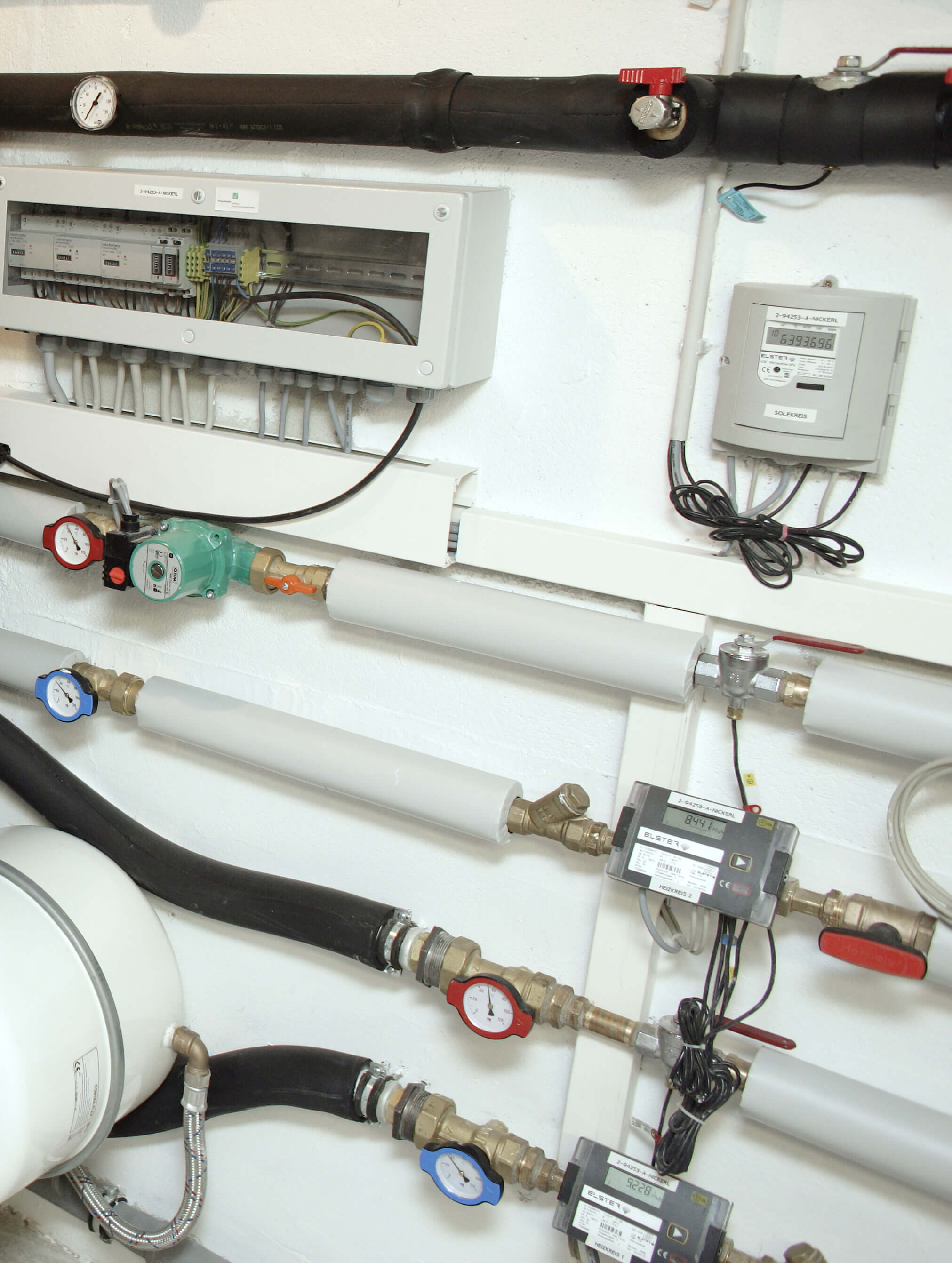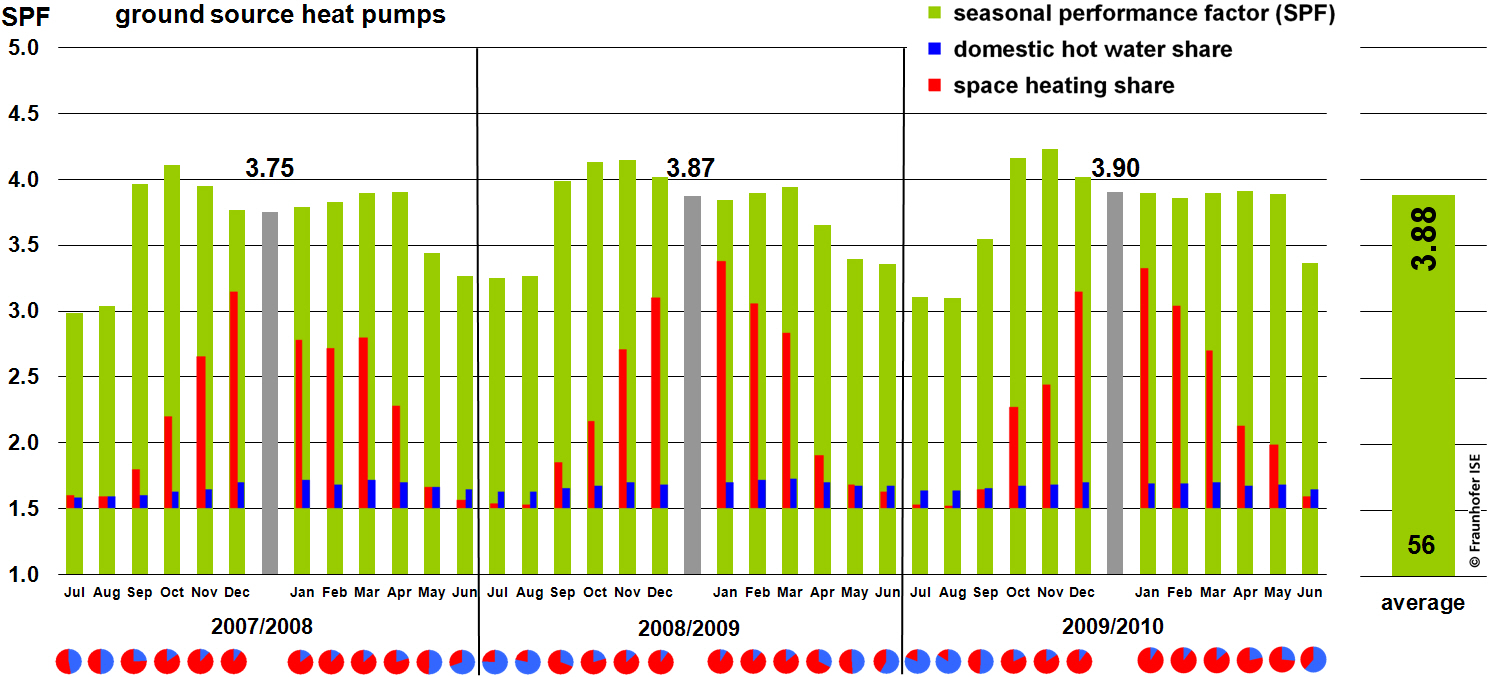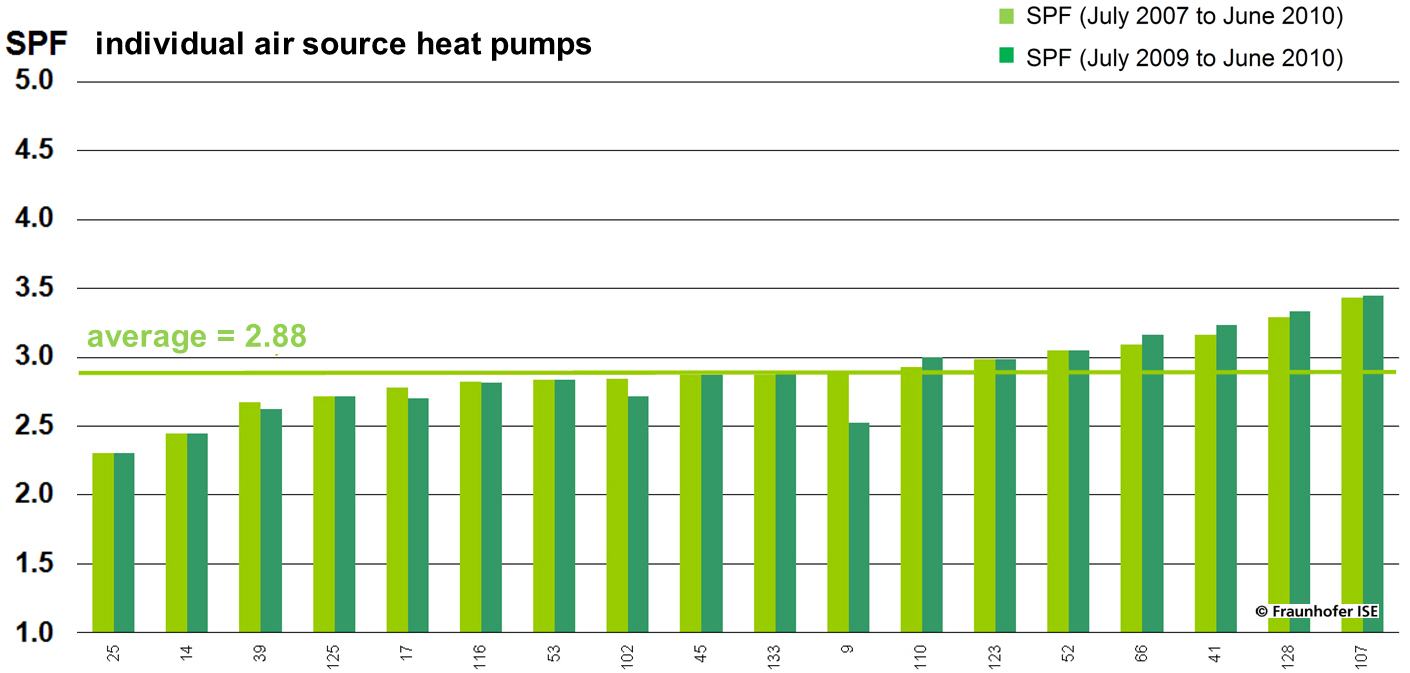| Duration: | October 2005 - September 2010 |
| Contracting Authority/ Sponsors: | German Federal Ministry of Economics and Technology (BMWi) |
| Project Partners: | ait-deutschland GmbH, Bosch Thermotechnik GmbH, EnBW Energie Baden-Württemberg AG, E.ON Energie AG, Hautec GmbH, NIBE Systemtechnik Gmbh, Stiebel Eltron Gmbh & Co. KG, Vaillant Deutschland GmbH & Co. KG, Viessmann Werke GmbH & Co. KG |
| Website: | www.wp-effizienz.ise.fraunhofer.de |
Heat Pump Efficiency – Heat Pump Field Trial in New Single Family Houses (I)



In 2006 the sales figures of electrically driven heat pumps increased rapidly. This market development intensified the need for an independent investigation to provide an energetic and ecological assessment of this technology. With partial funding from the former Federal Ministry of Economics and Technology, a consortium of seven heat pump manufacturers and two electric utilities was formed. Under the leadership of Fraunhofer ISE, 110 heat pumps, providing the space heating and domestic hot water in new single family houses, were investigated. The detailed data was used to determine the efficiency and to analyze the operation behavior and optimization potential.
The project “WP-Effizienz“ was conducted from October 2005 to September 2010. For the analysis, measurement data of 56 ground source, 18 air source and 3 water source heat pumps were considered. Underfloor radiant heating was the most common type of heat distribution system. In 2009, the average space heating demand in these buildings was 72 kWh/m² for an average heated floor area of 199 m².
A main project outcome showed that carefully planned and correctly installed heat pump systems reach efficiencies that give them an ecological and economical advantage over fossil fuel powered systems. However, numerous possibilities for error in the planning, installation and operation led to widespread results, which demonstrates the enormous potential for optimization here.
The data, treated anonymously, was evaluated between July 2007 and June 2010. Within this period, ground source heat pumps reached an average seasonal performance factor (SPF) of 3.9, while air source heat pumps reached an SPF of 2.9. During the second phase of the project, ground source heat pumps reached an average SPF of 4.1 and air source heat pumps 3.0 respectively. The average SPF of the three water source heat pumps was 3.7. Numerous other analyses addressing, for example, system temperatures, auxiliary power consumption or the efficiencies of combined solar systems are documented in the project report, which is available on the homepage